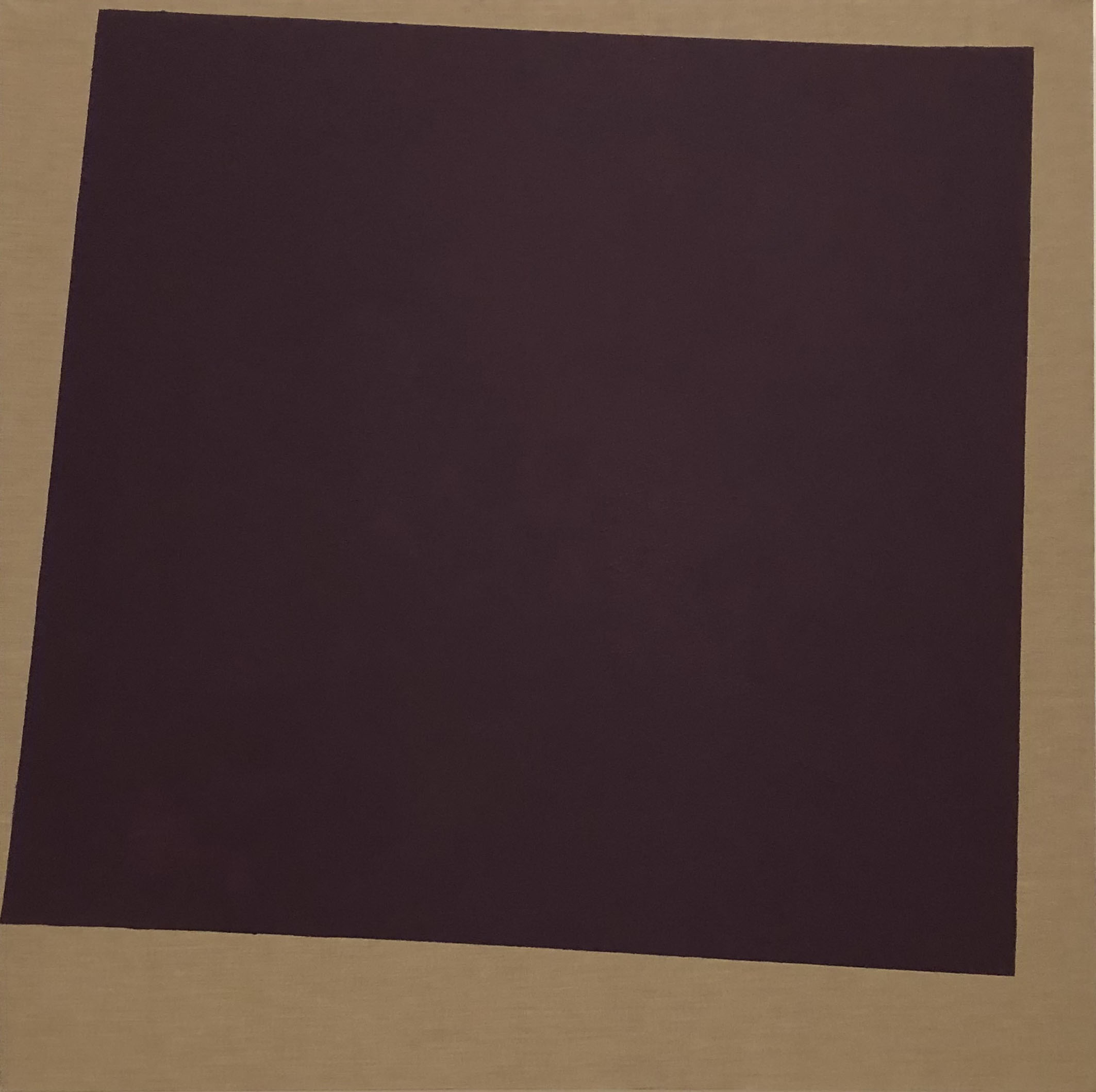 |
| Noah Davis, The Architect, 2009. Studio Museum in Harlem |
Noah Davis (1983–2015) had a short career—barely 6 years—before his early death from cancer at the age of 32. In the decade since his passing, interest in this quintessential L.A. artist has gone global. That's underscored by the retrospective now at the Hammer Museum, organized by the Barbican, London, and DAS MINSK, Potsdam. The show will come as a revelation even to many who have followed Davis' career closely. Rarely exhibited works are on view, and the gallery texts are a model of clarity, explaining the rich personal symbolism of Davis' art without jargon.
Paul Williams. The Architect (top of post) is a tribute to Paul Revere Williams, the pioneering Black architect of mid-century Los Angeles. When first shown, Davis connected the painting to ancient Egypt: "A lot of Egyptian texts are about architects, a lot of the great pharaohs are architects, so that's what it's about." Williams' buildings appear in a number of Davis' paintings, notably the Pueblo Del Rio series, named for a 1941 housing project for Black defense workers. Williams' modern utopia eventually became a dangerous slum. Davis' Pueblo Del Rio paintings imagineer an alternate reality in which the project is a magic-realist haven for art, music, and dance.
 |
| Noah Davis, The Conductor (Pueblo Del Rio series), 2014. Glenstone Museum, Potomac, Maryland |
 |
| Noah Davis, Isis, 2009. Mellon Foundation Art Collection |
Egypt. Davis' sculptor-wife Karon plays the role of Isis in a 2009 painting based on a photo taken in the couple's backyard. Isis is traditionally represented by a sun disc, here presented as a parade costume. Noah, who sometimes saw himself as Osiris, is barely visible in the window at right.
 |
| Unknown photographer, collected by Noah Davis |
Snapshots. Davis collected vernacular photos of African-American life from Los Angeles swapmeets. The composition of some of Davis' paintings, such as the untitled 2015 work at MoMA, closely follow found snapshots.
 |
| Noah Davis, untitled, 2015. Museum of Modern Art |
Drip Painting & Rothko. Davis used thin, runny oil paint, sometimes over a wax layer (an allusion to Egyptian encaustic) to achieve his drips. He was no less fascinated with Mark Rothko. He recognized "Hood Rothkos" in graffiti'ed walls that authorities attempted to erase by spray-painting with misty blocks of color. Davis adopted the rabbit glue that Rothko did for his canvas preparation. Henry Taylor said that Davis' figures "embraced a solemn background, like people inside Rothko paintings… alone in a big world."
 |
| Noah Davis, The Missing Link 3, 2013. Collection of Heidi Hertel and Greg Hodes |
Purple. A rich purple was one of Davis' favorite colors. The Underground Museum, established by Noah and Karon Davis in 2012, had a "Purple Garden" in homage to rock star Prince. The Hammer exhibition uses purple shades throughout. Shown is the custom purple candy-flake gallery seating.
 |
| Bench for "Noah Davis," Hammer Museum, UCLA |
 |
| Installation view of recreated "Imitation of Wealth" at the Hammer's "Noah Davis" |
Readymades. The Underground Museum aspired to bring contemporary art to Arlington Heights. When museums declined to lend, Davis created copies of Duchamp, Flavin, Smithson, and Koons pieces. The fakes became "Imitation of Wealth," the UM's first show (named for Douglas Sirk's Imitation of Life, about a Black woman who passes for white). Later MOCA director Helen Molesworth established a program of lending works to the UM, but the Davises' institution closed in 2022.
 |
| Noah Davis, Maury Mondrian, 2012. The Scantland Collection |
Maury Povich. A group of paintings are based on freeze-frames of Maury Povich's daytime talk/reality show, which often made light of real or faked Black family dysfunction. The paintings bring in Rothkoesque color planes and, in one case, Mondrian as well.
 |
| Noah Davis, 2004 (1), 2008. Collection of Lindsay Charlwood and Ryan McKenna |
Abstraction. I bet you didn't know that Davis did hard-edge abstractions. He did three, of which only one survives. 2004 (1) refers the year of Barack Obama's election. The contours represent the swing state of Colorado (the other two paintings were Nevada and New Mexico). The purple color represents a bipartisan blend of red and blue. In this case, purpleness seems a million years ago.
"Noah Davis" is at the Hammer through Aug. 31, 2025.
 |
| Noah Davis, The Missing Link 4, 2013. LACMA |
The Missing Link 4 shows a 1959 housing project by Mies van den Rohe in Detroit. Davis explained, "I guess you can say I'm fascinated with instances where Black aesthetics and modernist aesthetics collide."
 |
| Noah Davis, Congo #7, 2014. Private collection, London |
The Congo series was based on photographs taken by Davis' brother Kahlil Joseph during a trip to central Africa. None of the paintings make the African location apparent.
 |
| Noah Davis, The Missing Link 6, 2013. Estate of Noah Davis |
Davis said the man sitting beside the tree was inspired by Manet and Alfred Hitchcock's 1955 black comedy
The Trouble With Harry.













Comments
1963 (a replica of the 1914 original). Duchamp is in the house! :
https://www.nortonsimon.org/art/detail/P.1968.28